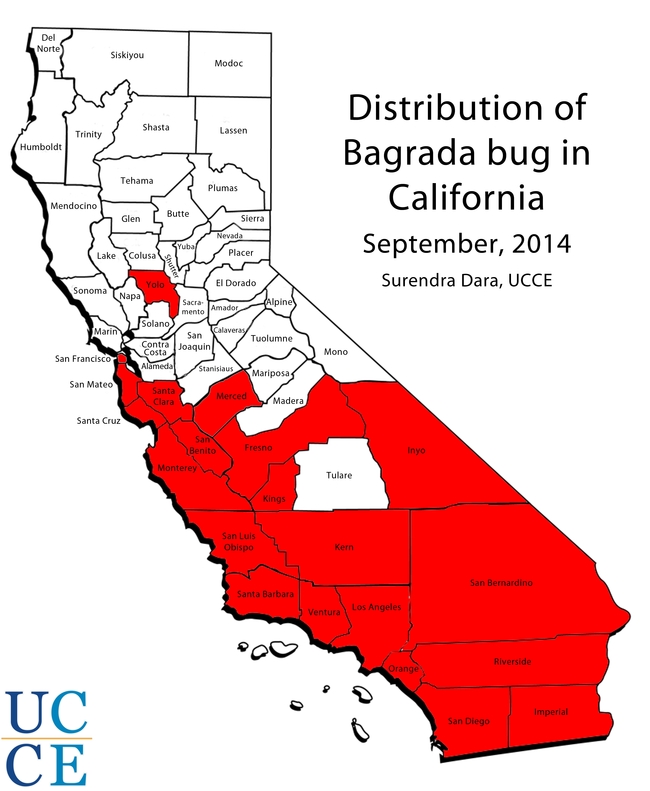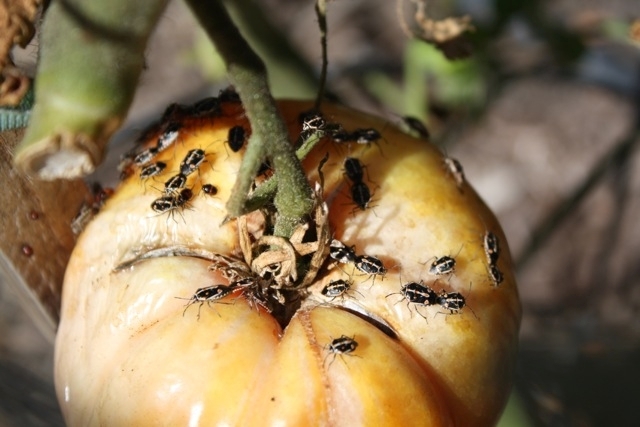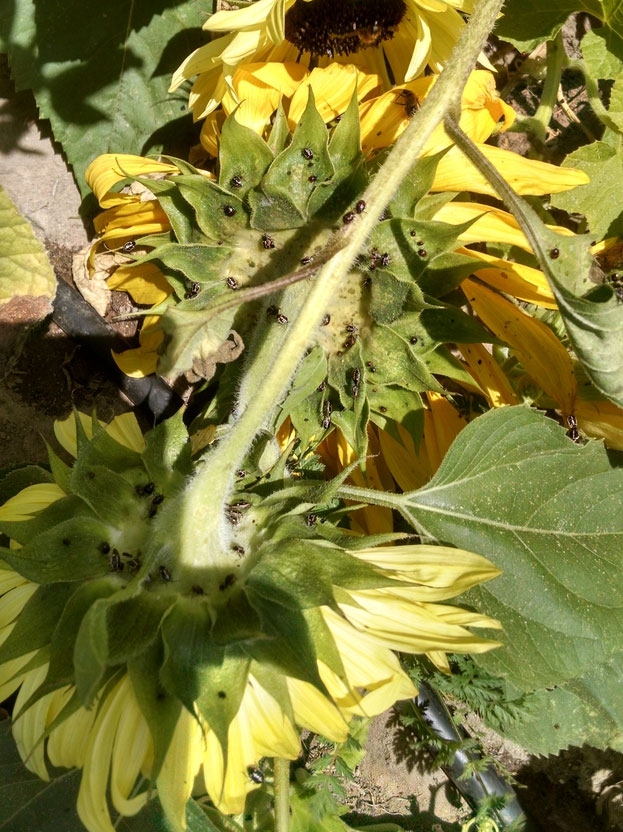A disheartening new pest invades California vegetable gardens
California gardeners harvesting their summer produce may encounter a new pest – the bagrada bug. The native of Africa made its first California appearance in Los Angeles County six years ago and has been moving eastward and northward ever since.
“Citizen scientists have been instrumental in reporting the occurrence of bagrada in various counties and are helping map its current distribution,” said Surendra Dara, UC Cooperative Extension advisor in San Luis Obispo, Santa Barbara and Ventura counties. “This is a very serious pest. It is wiping out gardens, and is of great concern for small-scale and organic growers.”
Bagrada bugs are major pests of cruciferous vegetables, such as cabbage, kale, cauliflower, Brussels sprouts and broccoli, but they don't appear to be picky eaters. They have been known to feed on a wide variety of garden vegetables in California, including green beans, cantaloupe, corn, peppers, potatoes, tomatoes and sunflower. Even landscape plants are not immune. Bagrada bugs have been found feeding on ornamental plants in the mustard family, like sweet alyssum, stock and candytuft.
The adult bagrada bugs are about the size of watermelon seeds and have shield-shaped black backs with white and orange markings. Young bagrada bugs – with their red, black and white markings – are sometimes mistaken for ladybugs. But bagrada bugs have piercing and sucking mouthparts which cause dead spots on plant leaves and stems when they feed, and result in stunted growth, plant deformities and plant death.
Dara said scientists had hoped cold winter temperatures in northern counties of California would limit the bagrada's northward march, but that hasn't been the case so far.
“Bagrada bugs can survive the winter or cold nights by entering the top layer of the soil around crops,” he said. "They start appearing again in early spring and move from weeds to young vegetables."
For more information on bagrada bugs, see the Pest Note produced by the UC Integrated Pest Management Program. In addition, Dara regularly posts bagrada bug updates on his blog, Strawberries and Vegetables.

Distribution of bagrada bug in California, September 2014.
Comments:
Thanks for the information on their presence in Merced County. I will update the distribution map. I hope they do not come back.
Thank you,
Surendra
San Dimas CA 91773





Posted by Marilynne Manfredi on September 15, 2014 at 8:01 PM